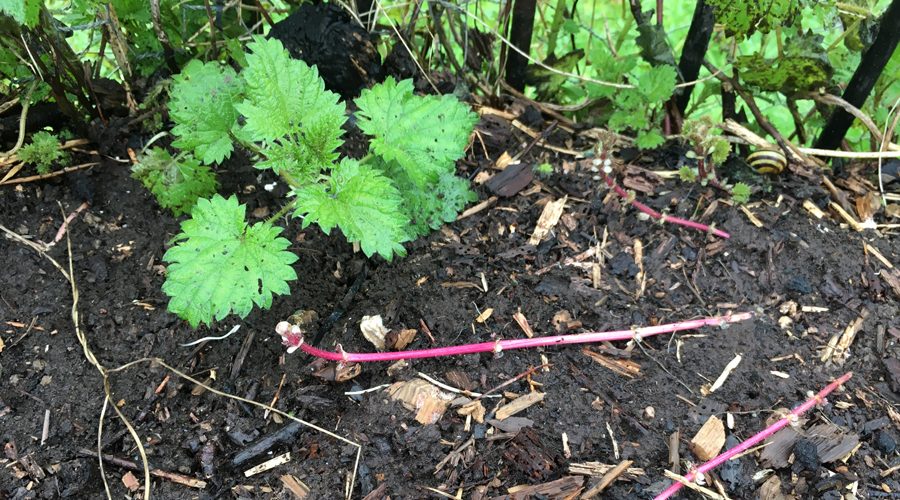Last spring in the midst of Lockdown 1 when the sun was shining and I had a reasonable amount of free time to kill at weekends, I scraped up all the old wood chip from the pathways and added it to a compost pile. It made a fairly sizeable pile, so I was quite pleased with myself. I covered the compost as much as I could, and left it to do its thing while I grew my veggies.
Cue the start of Lockdown 3 and again I have a bit of spare time at weekends. There’s not a huge amount to do in the veg patch at the moment, so I turned my attention back to my compost pile.
It turns out that over the course of the summer the bindweed and nettles that grow up around the fence behind the compost pile had sneakily done a marvellous job of spreading their roots into the compost pile. My huge mound of beautifully crumbly compost is absolutely riddled with bindweed roots and nettles! What to do?!
Well, I am doing the only thing I can think of… one shovelful at a time, I am sifting through the compost pulling out each little root that I find. Once I’m satisfied that the compost is as weed-free as possible, I’m putting it into a new pile well on a bare patch of soil that is well away from any other infiltrating weeds. Once finished, I’m going to then cover the compost again. But this time I shall keep a very beady eye on it so that the same thing doesn’t happen again. If I can keep it weed-free this summer, I can use it confidently as a mulch in autumn.
It is a laborious, lengthy process. It took me 2 hours to sift through the first twelfth of the pile. Still, there’s well over £150 worth of good-quality compost in that pile, so I think it is time well spent, and money well saved. And it gives me something to do during Lockdown.

